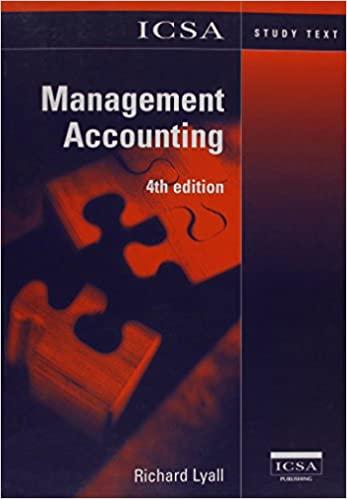Question
When you want to learn something, even something as complicated as how to make capital budgeting decisions, never rule out the value of simple observation.
When you want to learn something, even something as complicated as how to make capital budgeting decisions, never rule out the value of simple observation. Observing and analyzing the past and present decisions of others can help you make present and future decisions of your own. This is especially true in finances. For this Assignment, you read and analyze the following capital budgeting decision scenarios. In a 3- to 4-page paper, you evaluate the two scenarios using the following calculations: Net present value Discounted cash flow Risk-adjusted rate of return Internal rate of return Part 1: Carroll Tree Ranch Carroll Tree Ranch is considering expanding an existing plant on a piece of land it already owns. The land was purchased 15 years ago for $162,500 and its current market appraisal is $410,000. A capital budgeting analysis shows that the plant expansion has a net present value of $65,000. The expansion will cost $865,000, and the discounted cash inflows are $930,000. The expansion cost of $865,000 does not include any provision for the cost of the land. The manager preparing the analysis argues that the historical cost of the land is a sunk costa cost that has already been incurred and thus cannot be recoveredand since the firm intends to keep the land whether or not the expansion project is accepted, the current appraisal value is irrelevant. Should the land be included in the analysis? Explain why or why not. Part 2: Housing Markets A home comparable to yours in your neighborhood sold last week for $75,000. Your home has a $60,000 assumable 8% mortgage (compounded annually) with 30 years remaining. An assumable mortgage is one that the new buyer can assume on the old terms, continuing to make payments at the original interest rate. The house that recently sold did not have an assumable mortgage; that is, the buyers had to finance the house at the current market rate of interest, which is 7.5%. What selling price should you place on your home? Explain using capital budgeting calculations. A third home, again comparable to the one that sold for $75,000, is being offered for sale. The only difference between this third home and the $75,000 home is the property taxes. The $75,000 homes property taxes are $1,500 per year, while the third homes property taxes are $1,000 per year. The differences are due to vagaries in how property tax assessors assessed the taxes when the homes were built. In this tax jurisdiction, once annual taxes are set, they are fixed for the life of the home. Assuming the market rate of interest is still 7.5%, what should be the price of this third home? Why?
Step by Step Solution
There are 3 Steps involved in it
Step: 1

Get Instant Access to Expert-Tailored Solutions
See step-by-step solutions with expert insights and AI powered tools for academic success
Step: 2

Step: 3

Ace Your Homework with AI
Get the answers you need in no time with our AI-driven, step-by-step assistance
Get Started


